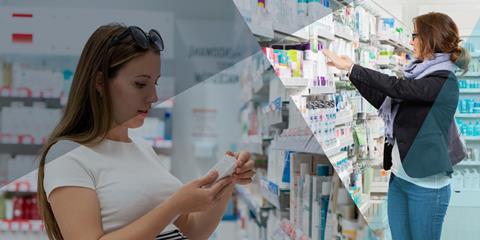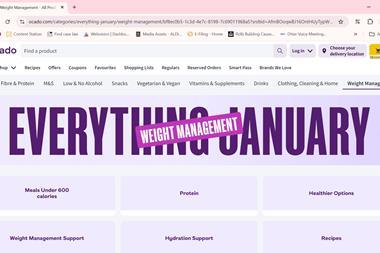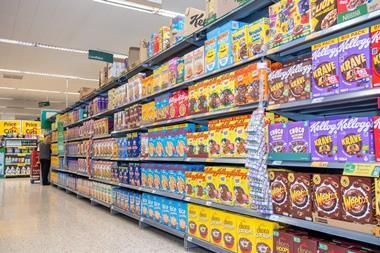COVID-19 has accelerated the self-diagnostics sector and provided an exciting opportunity for retailers within the healthcare category. Here we uncover five key trends that can help unlock this potential.
In the blink of an eye self-testing for COVID-19 through lateral flow tests became a normalised form of diagnostics, and one which delivered significant preventative benefits.
Overnight lateral flow tests were available via the GOV.UK website and popped up in pharmacies and supermarkets across the UK.
Consumers jumped at the convenience of having test kits at home, ready to use, without the need to travel to a testing centre and wait up to 24 hours for the result of a PCR test. And with the category established, and consumers won over by the ease and benefits of home testing, the questions for retailers and pharmacies are now:
What does the future of self-diagnostics look like? And, will the self-diagnostics trend become embedded or dissipate?
At 2San, we believe that self-diagnostics are here to stay and will become increasingly diversified because, despite COVID-19 self-test sales and distribution declining as the virus becomes more endemic, consumers, workplaces and governments have accepted self-diagnostics as an important tool in the healthcare continuum.
Here are five trends retailers and pharmacies need to know to stay ahead of the curve:
1. Better health planning through new data and surveillance testing
Self-diagnostics offer the public health sector something it has never had before: access to mass population data on a particular disease, as well as its trends and velocity of movement by postcode.
As a result, some of the benefits include an ability to track the trends of diseases and proactively plan and respond to those illnesses. Also, the ability to locate and isolate any locations of high-risk or minimise potential impact on vulnerable population groups; and thirdly, the ability to minimise the spread of disease through proactive testing and isolation at home.
For retailers, we recommend keeping a particular eye on self-diagnostic devices that are supported by digital platforms that capture and distribute testing information easily for consumers, primary health providers and health departments.
Inevitably when the next pandemic or major flu season (or equivalent) plays out, rather than products being developed in isolation with separated diagnostic tools and digital databases, the ones most likely to be embraced by health systems are the ones that integrate both.
Robust cyber and data security measures will also be essential prerequisites to this digital capability.
2. New tools to support primary healthcare providers
The COVID-19 pandemic has placed significant strain on an already strained health sector. It’s estimated that NHS trusts will have a shortage of over 140,000 nurses by 2030-2031. 15 million people in England have a long-term or chronic condition for which there is no cure. People with such conditions now account for 50 per cent of GP appointments, 64 per cent of outpatient appointments and over 70 per cent of inpatient day beds.1
With an ageing and growing population, there will be increasing demand on GPs as more people with more complex cases take longer to treat.
The move to self-diagnostics and ability to purchase in a retail setting is a ground-breaking opportunity to ease the burden on our healthcare providers.2

3. Innovation and diagnostics
There are three primary areas of innovation for retailers to stay mindful of: product range, product capability and environmental credentials.
In terms of product range, the immediate opportunity is that retailers should expect to see an array of new testing products coming to market for a range of health and wellness conditions from HIV testing through to vitamin deficiencies tests and dual kits for COVID and Influenza.
Product capability is an incredibly exciting space. For example, self-diagnostics will exist for wellness and lifestyle management. They will not be limited to revealing the disease you’re suffering from, but will ultimately take you through a diagnostic process to the appropriate treatment, often within the safety and comfort of your own home.
This pathway is particularly important for our more vulnerable members of society. Not only will this allow faster treatment at home, but it will also reduce the pressure on the NHS – saving time and money.
Finally, in the environmental space there are some incredibly exciting developments that will address and reduce the landfill impact of medical waste created by diagnostic tests. These products will be ‘price of entry’ as they become more readily available and demonstrate the testing sensitivity required on a consistent, replicable basis.
4. Employer and workforce productivity and safety
We anticipate the old maxim of ‘soldier on’ will now be superseded by the potential of self-diagnostics.
Before we even consider soldiering on, whether at home or at work, self-testing can provide consumers with an evidence base when they feel unwell together with diagnosis information and treatment pathway options.
This will ensure a far more targeted form of treatment for the patient and bring peace of mind to both employers and employees that the spread of disease can be prevented in the workplace.
Watch this space for new slogans…

5. Education and accuracy is essential for consumer confidence
As the self-diagnostics category grows, retailers should advocate for advice for consumers and retailers, from the diagnostics industry, to ensure confidence in the market and available products. A programme of audit and random testing would support consumer confidence and ensure quality assurance remains high.
These five trends are what we see as being an emergence of a renaissance in diagnostics; these are trends we believe the retail sector should be aware of and begin planning for.
This is a new category with significant growth potential and widespread public health benefit, and it’s an area 2San is invested in championing with a comprehensive range of self-diagnostics about to launch.
The pandemic has been incredibly tough, but COVID-19 has accelerated the self-diagnostics sector and provided an exciting opportunity for retailers to contribute to better care and better lives for everyone.
To find out more visit 2San.

This content is provided by Mark Hewlett, CEO of 2San
As Global CEO, Mark leads the 2San Executive team, having recently joined from the UK Health Security Agency, where he was Chief Operating Officer for the Government’s testing programme.
Sources



















